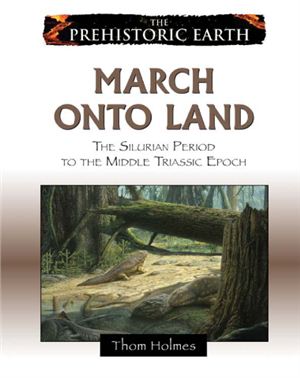Chelsea House Publications, 2008. - 193 pages. Series "The
Prehistoric Earth".
"March Onto Land" depicts life's migration from the sea to the land and the rise of the first terrestrial organisms. Following the appearance of the first land plants and terrestrial invertebrates, some animals with backbones ventured out of the water. After gaining a toehold on dry land, terrestrial vertebrates grew in number and diversity to become the most important large-bodied organisms on the planet.
The evolution of the amniotic egg gave vertebrates an adaptive advantage, allowing them to explore habitats beyond those of their water-bound amphibian ancestors. As a result, reptiles arose and rapidly diversified into a variety of distinct families, each with its own peculiarities.
Vertebrate groups explored in this full-color volume include early tetrapods, amphibians, and reptiles. By the Middle Triassic period, the evolutionary stage was set for the rise of many new and distinct species, including mammals and dinosaurs.
"March Onto Land" depicts life's migration from the sea to the land and the rise of the first terrestrial organisms. Following the appearance of the first land plants and terrestrial invertebrates, some animals with backbones ventured out of the water. After gaining a toehold on dry land, terrestrial vertebrates grew in number and diversity to become the most important large-bodied organisms on the planet.
The evolution of the amniotic egg gave vertebrates an adaptive advantage, allowing them to explore habitats beyond those of their water-bound amphibian ancestors. As a result, reptiles arose and rapidly diversified into a variety of distinct families, each with its own peculiarities.
Vertebrate groups explored in this full-color volume include early tetrapods, amphibians, and reptiles. By the Middle Triassic period, the evolutionary stage was set for the rise of many new and distinct species, including mammals and dinosaurs.

